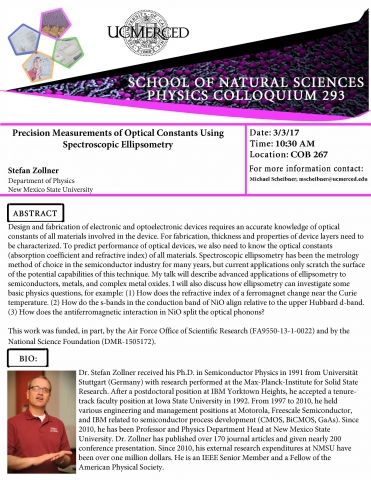Stefan Zollner, New Mexico State University
Abstract:
Design and fabrication of electronic and optoelectronic devices requires an accurate knowledge of optical constants of all materials involved in the device. For fabrication, thickness and properties of device layers need to be characterized. To predict performance of optical devices, we also need to know the optical constants (absorption coefficient and refractive index) of all materials. Spectroscopic ellipsometry has been the metrology method of choice in the semiconductor industry for many years, but current applications only scratch the surface of the potential capabilities of this technique. My talk will describe advanced applications of ellipsometry to semiconductors, metals, and complex metal oxides. I will also discuss how ellipsometry can investigate some basic physics questions, for example: (1) How does the refractive index of a ferromagnet change near the Curie temperature. (2) How do the s-bands in the conduction band of NiO align relative to the upper Hubbard d-band. (3) How does the antiferromagnetic interaction in NiO split the optical phonons?
This work was funded, in part, by the Air Force Office of Scientific Research (FA9550-13-1-0022) and by the
National Science Foundation (DMR-1505172).




